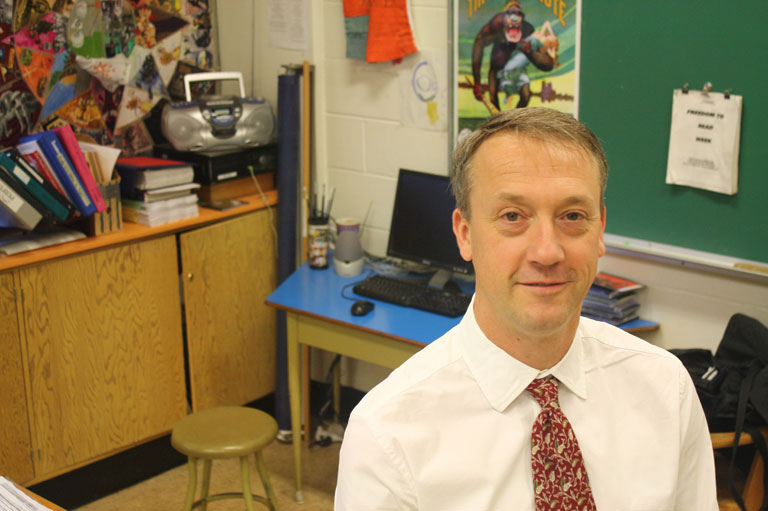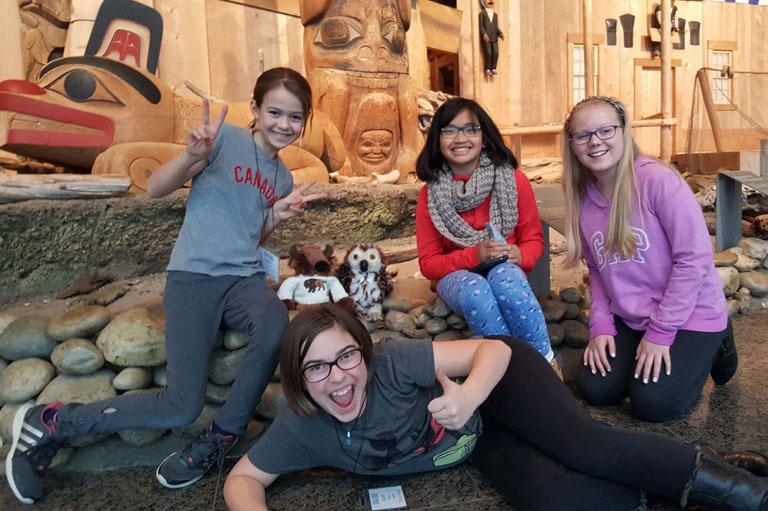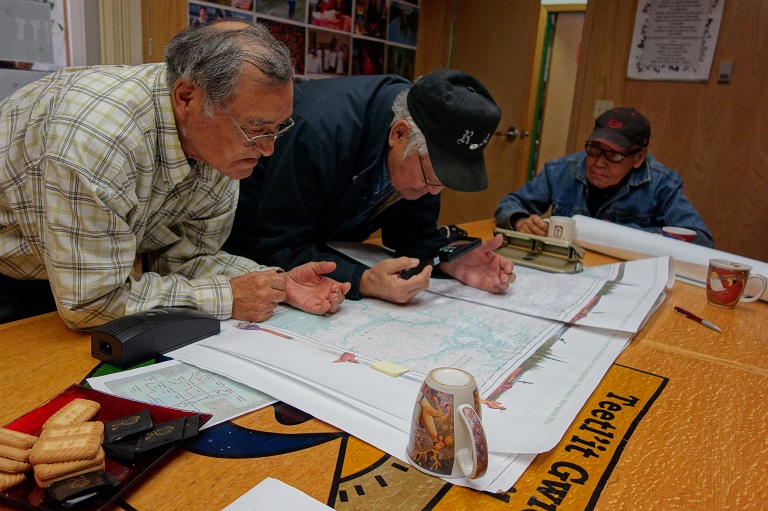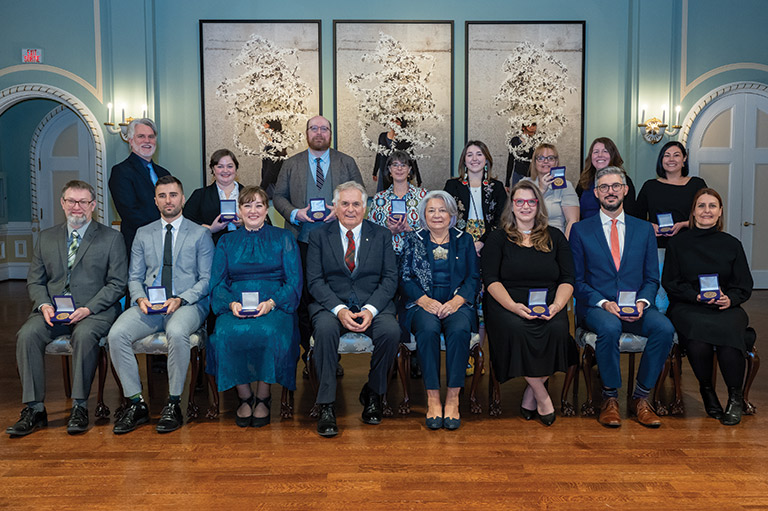Canadian History from Astrolabe to Ypres

For students in Adrian French’s challenge program, history isn’t just a fifty-minute class; it’s a three-year odyssey that interweaves historical research with math, sciences, geography, literature, and the arts.
“At the end of it, some people say: I’ll never do that again. Others say: I can’t stop digging,” laughs French, who won the 2010 Governor General’s History Award for Excellence in Teaching. “Because so many of them have found history boring in the past, they’re reinvigorated with Canadian history.”
The students in the challenge program at Mount Douglas Secondary School, in Victoria, B.C, take all of their classes together in grades 9 through 11. This has allowed French to design a unique history curriculum.
In grade 9, students undertake a fourteen-week project on the exploration of Canada. Each student chooses a famous explorer and follows him on one of his voyages of discovery. They learn how to ask questions to elicit interesting information about the past.
“The questions go from simple, like: Where did they go? — to complex, like: What were the challenges of the technologies that they used?” French says. “They are linked to subjects in math, like navigation, and physics, like the physics of a snowshoe.”
In grade 10, students study immigration in another fourteen-week project. Each student is given a card with a latitude and longitude, pinpointing a location from which emigrants came to Canada. Each student then has to create a character who might have immigrated to Canada from that location.
“For this stage you need to find five primary sources and three secondary sources. When you find them you have to put them on a website,” French said. “What were the politics that your immigrant would have found? Were there laws? Was there prejudice? They add everything to their own database and to the class database. They begin to be very good at finding sources.”
Instead of a final exam, students get up at the end of the project and tell the story of their immigrant, often dressing in character and adding creative elements, like folk songs.
In grade 11, the curriculum focusses on the First World War and integrates Joseph Boyden’s book Three Day Road with poetry writing, the creation of a Cree star blanket, and an assignment to tell a story using photographs.
Finally, the students are assigned a new research project that makes history intensely personal.
“They have to produce a piece of art that represents who they are in the world,” says French. “Where did your family come from? What are the events that shaped you?”
Author’s Note: Adrian has recently been hired by St. Michaels University School as The Director of Learning
Themes associated with this article
Advertisement




